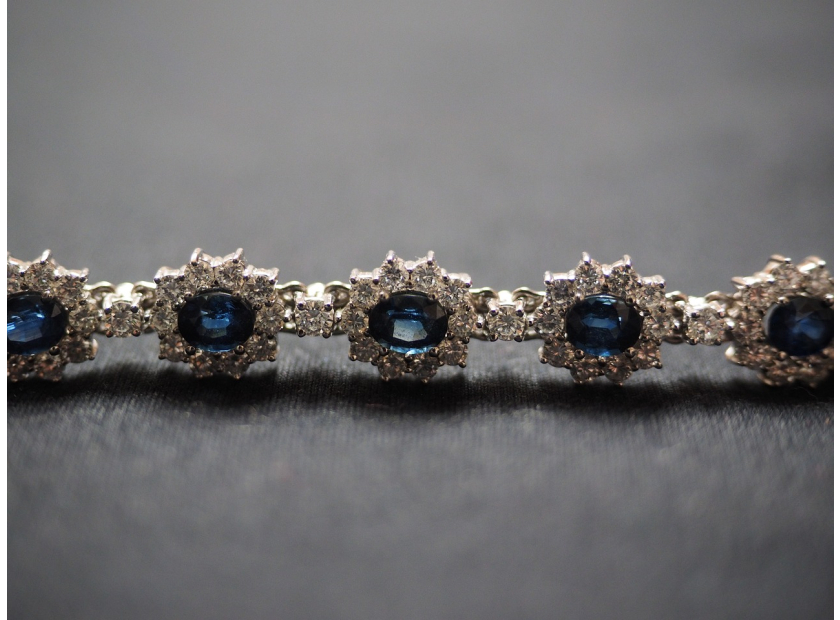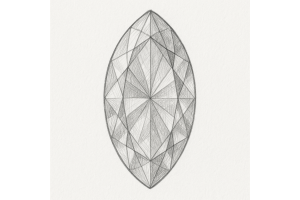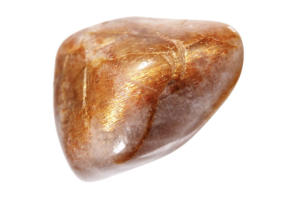GBP
/
GBP
/
Shipping to:
Currency:
What Is a Star Sapphire? Meaning, Formation, and Buying Guide
Star sapphires are among the most captivating gemstones, renowned for their unique star-like phenomenon known as asterism.
This optical effect creates a shimmering star pattern on the stone's surface, enchanting gem enthusiasts and collectors alike.
In this article, we'll explore the allure of star sapphires, their formation, varieties, significance, and care.
Introduction to Star Sapphires
A star sapphire is a variety of the mineral corundum that exhibits a star-like optical effect on its surface.
This mesmerising phenomenon, known as asterism, sets star sapphires apart from their faceted counterparts, making them highly prized in jewellery and gem collections.
If you’re interested in jewellery that features vibrant stones beyond diamonds, check out the gemstone engagement rings collection for inspiration.
The Science Behind the Star: Asterism Explained
Asterism occurs when light interacts with needle-like inclusions within the gemstone, typically composed of the mineral rutile.
These inclusions align in specific orientations, and when light reflects off them, it creates the appearance of a star floating on the surface of the stone.
This effect is most prominent when the gem is cut en cabochon, with a smooth, rounded surface that enhances the visibility of the star.
Formation of Star Sapphires
Star sapphires form under unique geological conditions where corundum crystallises alongside rutile inclusions.
Over millions of years, these inclusions align in patterns that, when properly cut, produce the star effect.
Natural star sapphires are rare, and their distinctive asterism makes them particularly valuable.
Synthetic versions are also produced, but they lack the natural charm and rarity of their genuine counterparts.
If you're curious about where and how different gemstones come into existence, check out this guide on how gemstones and diamonds are formed.
Varieties of Star Sapphires
Star sapphires can display different numbers of rays in their star patterns, most commonly six.
Some rare specimens exhibit twelve-rayed stars, resulting from multiple sets of inclusions intersecting within the stone.
The colour of star sapphires varies widely, including blue, black, pink, and yellow, with blue being the most sought after.
The intensity and clarity of the star effect can also differ, influencing the gemstone's overall appeal and value.
Notable Sources of Star Sapphires
Sri Lanka, Myanmar, and Thailand are renowned for producing high-quality star sapphires.
Sri Lanka, in particular, has yielded some of the world's most famous specimens, such as the Star of India.
The geological conditions in these regions favour the formation of the rutile inclusions necessary for asterism, contributing to their prominence in the gemstone market.
Identifying Genuine Star Sapphires
Authentic star sapphires can be distinguished by their sharp, well-defined star patterns that move smoothly across the surface as the light source or stone is moved.
Imitations or synthetic versions may exhibit stars that are static or less distinct.
It's essential to purchase star sapphires from reputable dealers and seek certification to ensure authenticity.
For those exploring unique alternatives to traditional diamonds, check out these non-traditional engagement ring styles.
Cutting and Setting Star Sapphires
The cabochon cut is essential for showcasing the asterism in star sapphires.
The dome's height and symmetry play a crucial role in the visibility and quality of the star effect.
Jewellery settings that allow ample light to interact with the stone, such as open-back designs, enhance the prominence of the star, making rings and pendants popular choices for these gems.
Symbolism and Significance of Star Sapphires
Throughout history, star sapphires have been cherished as symbols of protection, wisdom, and spiritual insight.
Travellers once carried these gemstones as talismans, believing they could guide and safeguard them on their journeys.
In various cultures, star sapphires are associated with divine favour and are thought to bring good fortune to their wearers.
Caring for Star Sapphires
To maintain the beauty of a star sapphire, clean it gently with warm soapy water and a soft brush, avoiding harsh detergents.
It's advisable not to soak the stone and to store it separately to prevent scratches from harder gemstones.
Regular maintenance ensures the longevity and brilliance of the star effect.
Famous Star Sapphires
Several star sapphires have gained fame for their size and beauty.
The Star of India, weighing 563.35 carats, is one of the largest and most renowned, currently housed in the American Museum of Natural History in New York.
The Star of Adam, discovered in Sri Lanka, holds the record as the largest known blue star sapphire, weighing an astonishing 1,404.49 carats.
Purchasing Considerations for Star Sapphires
When buying a star sapphire, consider factors such as the intensity and uniformity of the star, the stone's colour, clarity, and size.
A well-defined, centred star on a vividly coloured stone with minimal inclusions is most desirable.
Always request certification and consult with reputable jewellers to ensure the quality and authenticity of the gemstone.
If you're weighing options, you might also want to compare lab-grown diamonds vs gemstones to better understand what's right for your budget and values.
FAQs
What causes the star effect in star sapphires?
The star effect, or asterism, is caused by light reflecting off needle-like inclusions of rutile aligned within the gemstone, creating a star-shaped pattern on its surface.
Are star sapphires valuable?
Yes, star sapphires are valuable, especially those with a vivid colour, sharp and centred star, and minimal inclusions.
The gemstone's size and origin also influence its value.
Can star sapphires be synthetically produced?
Yes, synthetic star sapphires are created in laboratories.
While they show a similar star effect, they’re usually more affordable and less rare than natural ones.
What is the best cut for a star sapphire?
A cabochon cut is best, as it allows the star to be clearly visible.
The dome shape helps reflect light in a way that highlights the star.
How do I care for a star sapphire?
Use warm, soapy water and a soft brush to clean it.
Avoid ultrasonic cleaners and chemicals, and store it away from harder gemstones.








